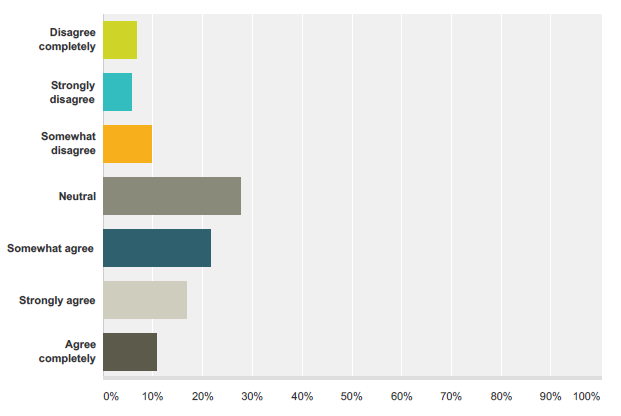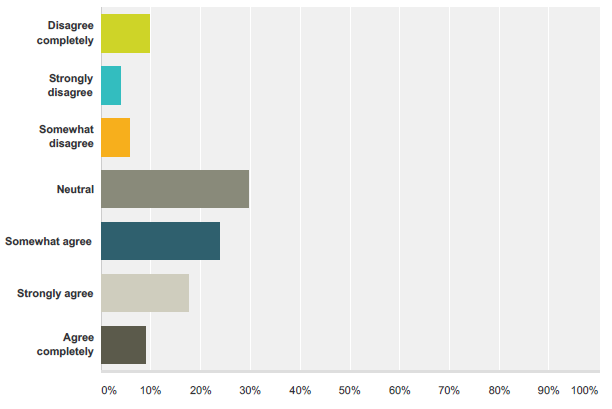Data Analysis
This subsection presents the information regarding the results of discussing observations related to the issue of preparedness for the emergency in the EDM Department of the HAAD. The information regarding the observations, as well as the data regarding the EDM standards, the associated risks, and the performance management in the EDM Department, was retrieved with the help of reviewing the HAAD documentation and contacting the EDM personnel.
Sampling
Since the study utilizes the review of the literature and the organization’s documentation, as well as the results of the previous studies conducted in the organization, as its methodology, it is irrelevant to discuss the sampling strategy for this research. Still, it is important to note that the HAAD involved 101 employees in the performance management and development survey that is discussed in this paper.
Data to Be Collected
To analyze the emergency preparedness capability of the staff working in the EDM Department of the HAAD, as well as the relevance of the EDM standards and criteria which were proposed for the healthcare workers operating in cases of emergency, it was necessary to contact the EDM personnel and obtain the required data for the further analysis. The secondary qualitative data are collected for this study.
This type of data allows utilizing the information presented in the previously conducted surveys for the current study while saving them time and costs and receiving access to the wide qualitative and quantitative data important for the analysis (Bryman, 2015). The focus was on collecting the feedbacks regarding the observations’ criticality in the EDM Department, the data regarding the EDM standards and predicted risks and the information regarding the results of the performance management and development survey conducted in the organization.
Perceptions of the Staff regarding Performance Management to Address Emergency Preparedness
The managers of the HAAD and the EDM Department surveyed to analyze the employees’ perceptions regarding the provided performance management and training to develop their professional skills, including capabilities associated with the emergency preparedness. Figure 2 presents the employees’ perceptions of the guidance provided in the HAAD in terms of emergency preparedness, standards, and criteria.
Only about 11% of employees noted that they agree with the provided guidance when about 7% and 6% of employees completely disagree or somewhat disagree with this statement. About 22% of employees somewhat agree with the idea, and the largest proportion (about 28%) is neutral regarding the question. Therefore, it is possible to state that the provision of guidance requires further improvement to satisfy the employees’ needs.

Figure 3 presents the results of the employees’ perceptions regarding the training courses provided to improve competencies. 23% of employees agree that the department provides enough training, but about 10% of respondents somewhat disagree with this statement. Still, 15% and 11% of employees even strongly and completely agree with the statement. Therefore, the department seems to provide emergency training, but there are also areas for improvement.

Figure 4 shows the employees’ visions regarding the convenience of in-house training. The majority of employees agree that the environments for the training are comfortable, but some workers are neutral or disagree with this idea (26% and about 16% accordingly). It is possible to speak about the high efforts made by the HAAD to improve the provided training.

Figure 5 demonstrates the reactions to HAAD management’s communication with employees regarding training and guidance. Almost 10% of employees completely disagree that any communication is observed, and about 10% of employees support this vision. However, the majority of workers are neutral regarding the question (about 30%). From this point, employees require the improvement of the communication regarding training with the HAAD managers.

In this study, the literature review means not only the discussion of scholarly articles but also the analysis of the organizational documentation and findings of the studies and surveys conducted in the HAAD. Managers of the HAAD need to improve their approaches to training employees regarding the EDM standards and criteria of behaving in critical situations.
Abstract
The paper discusses the challenges associated with emergency preparedness in the Emergency and Disaster Department of the Health Authority Abu Dhabi. The frequency of emergencies in the Middle Eastern region supports the necessity of discussing the issue of preparation enhancement for preventing and eliminating emergencies. The analysis of the secondary data is applied in this study to examine the capacities and training regarding emergency preparedness in the Health Authority Abu Dhabi.
The study reveals the lack of employees’ skills in addressing emergencies and the need for improving emergency preparedness using the manpower, staff training, and using the innovative equipment. The research results suggest some appropriate solutions to the problem, including the system of the employees’ training and changes in the organizational structure of the regulator.